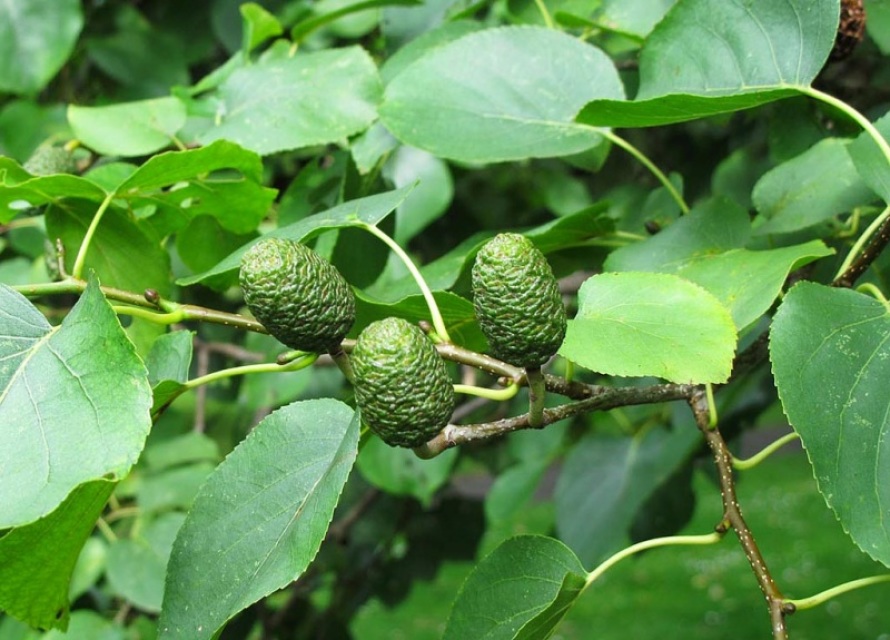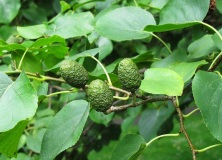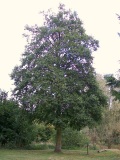- Home
- >
- Broadleaved Tree Seeds A-I by Latin Name
- >
- Italian Alder (alnus cordata)
Italian Alder (alnus cordata)
SKU:
£1.15
1.15
18
£1.15 - £18.00
Unavailable
per item
Seed Prices
0.5 gram (approx 312 seeds) £1.15
1 gram (approx 625 seeds) £1.65
2 grams (approx 1250 seeds) £2.20
5 grams (approx 3125 seeds) £4.25
10 grams (approx 6250 seeds) £7.75
25 grams (approx 15625 seeds) £18.00
Please note that these seeds require 6 weeks stratification before they will germinate. For a sowing date of March 1st this should begin on January 18th
Use the drop down button below to select the quantity
As you may have guessed from the name this tree is native to southern Italy (including Sardinia) and Corsica.
It is a medium-sized tree growing up to 25m (82') tall with heart-shaped, rich glossy green heart shaped leaves with a finely serrated margin .
Like other alders it is very fast growing and is able to fix nitrogen from the air. It thrives on much drier soils than most other alders, and grows rapidly even under very unfavourable circumstances, which renders it extremely valuable for landscape planting on difficult sites such as mining spoil heaps and heavily compacted urban sites and even on chalk. It is commonly grown as a windbreak even close to the coast as it can tolerate maritime exposure. Growth in the first season from sowing is usually between 30 and 60cm (1-2ft) and once established can be close to 1m (3ft) per year.
The Italian Alder makes a medium to large Bonsai, a quick grower it responds well to pruning with branches ramifying well and leaf size reducing quite rapidly.
For germination the seeds require a period of moist pre-chilling also known as stratification before the seeds should be sown, this takes around 6 weeks in the fridge and is not difficult to do!
Germination and after care information sent free with every order.
Seed collected from Shropshire, UK
Tested seed germination rate 99%
It is a medium-sized tree growing up to 25m (82') tall with heart-shaped, rich glossy green heart shaped leaves with a finely serrated margin .
Like other alders it is very fast growing and is able to fix nitrogen from the air. It thrives on much drier soils than most other alders, and grows rapidly even under very unfavourable circumstances, which renders it extremely valuable for landscape planting on difficult sites such as mining spoil heaps and heavily compacted urban sites and even on chalk. It is commonly grown as a windbreak even close to the coast as it can tolerate maritime exposure. Growth in the first season from sowing is usually between 30 and 60cm (1-2ft) and once established can be close to 1m (3ft) per year.
The Italian Alder makes a medium to large Bonsai, a quick grower it responds well to pruning with branches ramifying well and leaf size reducing quite rapidly.
For germination the seeds require a period of moist pre-chilling also known as stratification before the seeds should be sown, this takes around 6 weeks in the fridge and is not difficult to do!
Germination and after care information sent free with every order.
Seed collected from Shropshire, UK
Tested seed germination rate 99%
Germination, Sowing and After Care Information for
Italian Alder (alnus cordata)
Italian Alder seeds are relatively easy to germinate and grow. The dormancy within the seed is short and easily broken. This is achieved by a short period of cold stratification in the fridge. You can do this by first soaking the seeds in water for 24 hours. Fully drain away all of the water and place the seeds in a zip-lock freezer bag. Place the seeds in the fridge, it is important that during this period that the seeds do not dry out or are waterlogged otherwise the pre-treatment will be ineffective.
After between 4 and 6 weeks under these conditions the seeds are ready to be sown. In general, many seeds will fail to germinate unless treated in this way, simply sowing untreated seeds in compost at room temperature will not break down the dormancy and germination will be disappointing. You can also choose to mix the seed with moistened vermiculite, fine perlite or sand. These help to stop the seeds from clumping together and allow more between the seeds.
Fill your chosen container with a good quality general potting compost and firm it down well. Suitable containers could be plant pots, seed trays or plug trays or even improvised containers with drainage holes. Firm the compost gently and sow the seeds on the surface, if you have pretreated your seeds without any vermiculite/perlite etc. the seeds will be difficult to separate from each other. If you add a little dry sand at this point and mix thoroughly you will find that the sand separates the seed and makes it much easier to sow. Cover the seeds with a couple of millimeters of vermiculite or failing that a fine layer of sieved compost. Follow with a gentle watering and keep them at room temperature.
Germination will begin from a few weeks following sowing. The seedlings are very small and delicate, they need to be kept out of hot sun until the first true leaves emerge. Shading and a moist seedbed are very important for successful germination.
Seedling growth can be very rapid and in their first growing season the seedlings can grow to heights of between 20-50 cm. It is preferable to produce shorter, stocky, well branched seedlings rather than long leggy ones. High quality seedlings like these can only be grown if the sowing density is relatively low.
Keep the seedlings well watered and free from competing weeds. Growth will accelerate in the second and subsequent years and the developing young trees should be planted in their permanent position usually by the end of their second year. Large trees of these species do not transplant well and should only be moved during the dormant season.
After between 4 and 6 weeks under these conditions the seeds are ready to be sown. In general, many seeds will fail to germinate unless treated in this way, simply sowing untreated seeds in compost at room temperature will not break down the dormancy and germination will be disappointing. You can also choose to mix the seed with moistened vermiculite, fine perlite or sand. These help to stop the seeds from clumping together and allow more between the seeds.
Fill your chosen container with a good quality general potting compost and firm it down well. Suitable containers could be plant pots, seed trays or plug trays or even improvised containers with drainage holes. Firm the compost gently and sow the seeds on the surface, if you have pretreated your seeds without any vermiculite/perlite etc. the seeds will be difficult to separate from each other. If you add a little dry sand at this point and mix thoroughly you will find that the sand separates the seed and makes it much easier to sow. Cover the seeds with a couple of millimeters of vermiculite or failing that a fine layer of sieved compost. Follow with a gentle watering and keep them at room temperature.
Germination will begin from a few weeks following sowing. The seedlings are very small and delicate, they need to be kept out of hot sun until the first true leaves emerge. Shading and a moist seedbed are very important for successful germination.
Seedling growth can be very rapid and in their first growing season the seedlings can grow to heights of between 20-50 cm. It is preferable to produce shorter, stocky, well branched seedlings rather than long leggy ones. High quality seedlings like these can only be grown if the sowing density is relatively low.
Keep the seedlings well watered and free from competing weeds. Growth will accelerate in the second and subsequent years and the developing young trees should be planted in their permanent position usually by the end of their second year. Large trees of these species do not transplant well and should only be moved during the dormant season.






